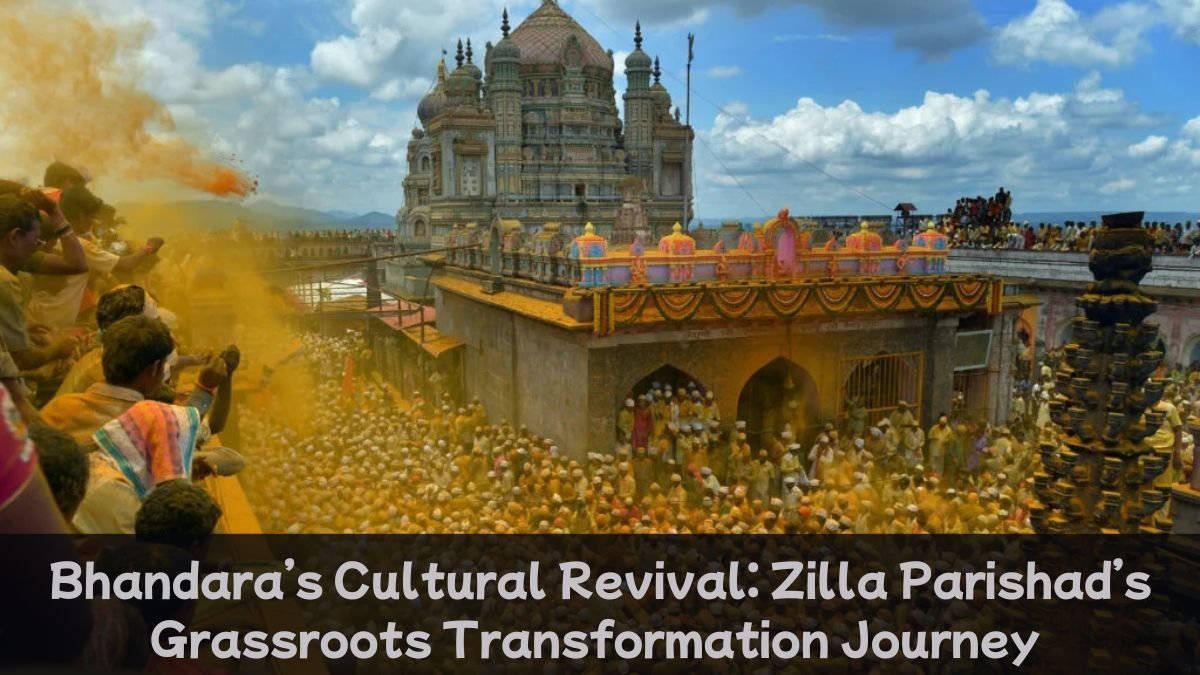Bhandara district to the west is a peaceful, but rich culturally, and full of lush green cover and having hundreds of ponds. The district is not only considered as the natural wealth but also has a cultural bonding with the people of this district over the generations. But in the changing times and the race of urbanization, the cultural identity of the villages was gradually getting blurred. It was at this juncture that the Zilla Parishad Bhandara took charge – it took the initiative to revive the culture by going from village to village.
In this article, we will know how the Zilla Parishad Bhandara, working at the grassroots level, not only started the process of cultural revival, but also gave a new identity to the villages.
Beginning of giving recognition to the culture of villages
Folk songs, folk dances, traditional fairs and religious customs have been going on in the villages of Bhandara for centuries. But gradually, due to modernity and technological changes, these traditions were disappearing. The Zila Parishad first identified these customs in depth — like which dances are disappearing, which fairs have now stopped or which traditional arts need preservation.
Cultural documentation: Every village has its own story
Change begins with information. So the Zila Parishad started documenting the cultural aspects of each village. Measures like talking to elders, interviewing traditional artists and video recording of old village festivals were taken. This initiative gave villages an opportunity to rediscover and appreciate their heritage.
‘Ek Gaon, Ek Parampara’ Abhiyaan
The Zila Parishad launched an innovative program called “Ek Gaon, Ek Parampara” in which every village was recognized according to its prominent cultural feature. Such as:
- Pawani village – for traditional ‘Dholki-Bhajan’
- Lakhni – for pottery making
- Tiroda – for tribal dance ‘Gondhaal’
This initiative made the villagers feel proud and inspired the youth to join these arts.
Cultural Festival: Identity got a platform
The Zila Parishad started district level cultural festivals, where artists from villages could present their art, music, dance and crafts. This not only became a medium of entertainment, but also gave financial support and recognition to the local artists.
Bhandara Mahotsav, a colourful festival of the city of ponds, brought folk art, food and traditional games under one roof.
Cultural education in schools
Cultural revival cannot be limited to the current generation only, it is also necessary to take it to the next generation. The Zila Parishad took the initiative to add traditional folk art, song and history as optional subjects in the government schools of Bhandara.
This was an important step in sensitizing children towards their roots. Today, teaching folk songs and village traditions to children has become a common practice in many schools in Bhandara.
Government recognition and support for folk artists
Many times traditional artists take up other jobs to earn a living as art does not bring them income. The Zila Parishad identified such artists and linked them with government schemes. These included:
- Monthly allowance
- Free stage and performance opportunities
- Participation in training camps
- Certificates and awards
This boosted the morale of the artists and they resolved to cherish their art.
Role of women: custodians of culture
The women of Bhandara have been preserving the heritage of folklore, traditional embroidery and food culture for centuries. The Zila Parishad ensured their participation in many cultural programs by involving women self-help groups.
Today, women not only participate in cultural exhibitions, but also take the lead in traditional kitchen culture – such as ‘Bhakri Mahotsav’ and ‘Pohe Pangat’.
Culture in the Digital Age: Online Journey of Folk Art
With the changing times, the Zila Parishad brought these cultural efforts to the digital platform through social media, YouTube and website. The traditional stories, songs and dances of Bhandara were recorded and uploaded online. This led to appreciation not only in other parts of India but also abroad.
Cultural Experience for Tourists
The Zila Parishad introduced “Cultural Tourism Circuit” to promote local tourism. It gives tourists an opportunity to visit villages:
- Watch folk dances
- Taste traditional cuisine
- Experience rural lifestyle
It also provided employment to the villagers and strengthened the cultural image of Bhandara.
Results: Visible change
The impact of these efforts is evident today:
- The cultural identity of villages has returned
- Youngsters are proud of their traditions
- Women and the elderly have become more active in society
- Cultural tourism has given a new direction to the local economy
Zila Parishad Bhandara has proved that if there is a will and a plan, keeping rural culture alive is not only possible, but can also be inspiring.
Conclusion
This cultural revival journey of Bhandara is not just a government scheme, but a movement – which has risen from the soil of villages, and has reached the hearts. This initiative of the Zila Parishad has made it clear that the true shine of culture is hidden in the simplicity of villages. And when this shine emerges again, it not only adds colour to the society, but also connects generations to their roots.
